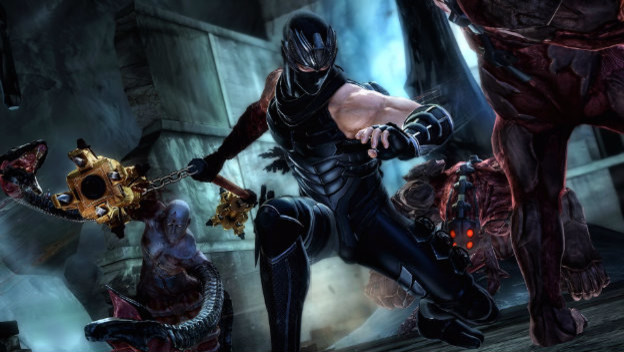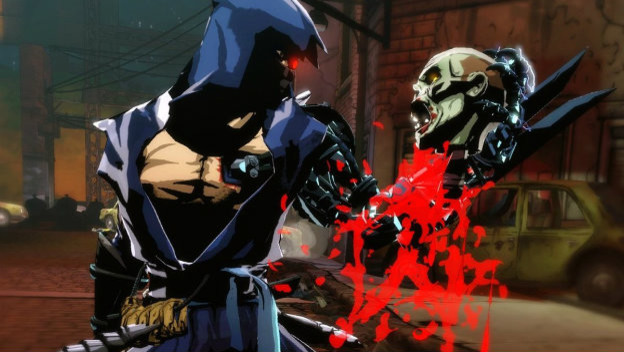Where the Hell Is Ninja Gaiden?

Man, this past console generation has been wild. It’s coming to a
close with the PlayStation 5 and Xbox Series X, and it’s going to do so
with several big sequels and even some new IPs. But for me, outside of
the big blockbuster titles, a lot of other surprise successes have
fueled my gaming passions. Capcom, in particular, has had a great time
with its key franchises (that aren’t Street Fighter), and
Square Enix has been righting its ship as well. But for all those top
tier, Japanese fan-favorites, a few legends haven’t managed to make it.
One of them is Ninja Gaiden, a series that goes all the way
back to Famicom and arcades. That series was once on top of the world,
but now it’s almost completely gone. What the hell happened?
Ninja Gaiden has enjoyed a long road, but it was always tough as nails. That was just how things were in the NES days, but it became a badge of pride when Team Ninja brought the series back. The team caught lightning in a bottle, dropping Ninja Gaiden on the Xbox and somehow capturing a western audience. Through violence, fast-paced action, and ludicrous challenges, mastering Ninja Gaiden (and the later iteration Ninja Gaiden: Black) became like a badge of honor. A sequel didn’t drop until the Xbox 360, but it would drop hard. Ninja Gaiden 2 was practically treated like an AAA release. And frankly, it was well-deserved.
Ninja Gaiden has enjoyed a long road, but it was always tough as nails. That was just how things were in the NES days, but it became a badge of pride when Team Ninja brought the series back. The team caught lightning in a bottle, dropping Ninja Gaiden on the Xbox and somehow capturing a western audience. Through violence, fast-paced action, and ludicrous challenges, mastering Ninja Gaiden (and the later iteration Ninja Gaiden: Black) became like a badge of honor. A sequel didn’t drop until the Xbox 360, but it would drop hard. Ninja Gaiden 2 was practically treated like an AAA release. And frankly, it was well-deserved.
But this sadly isn’t a long-term success story. Despite Ninja Gaiden standing alongside the genre greats like Devil May Cry or God of War, Team Ninja struggled a bit as the generation progressed. Ninja Gaiden 3 didn’t
stick the landing nearly as well as the games before it, and was met
with boos, jeers, and low review scores. A revised edition, subtitled Razor’s Edge, righted many wrongs. Alas, it was too little, too late, and it seemed like Ninja Gaiden was going to take a nap. Then things got worse.
Tecmo Koei seemed to want to keep Ninja Gaiden alive, but didn’t quite know what to do with it. That led to a few very impressive Vita ports, which did a lot to remind folks that Ryu Hayabusa is still cool. Some more time passed, and a new game appeared on the horizon. This new title was not a typical Ninja Gaiden, and it involved a new developer and Comcept’s Keiji Inafune. Inafune’s contributions to contemporary video game history have… not aged as well as his earlier time at Capcom, and there are reasons for that. Yaiba: Ninja Gaiden Z was a bland, new concept hiding behind a famous IP. It was a crude, colorful, action-packed zombie slasher that had Ryu shoehorned in for the sake of slapping the extra title on. But worst of all, it was proof that whatever’s going on with Ninja Gaiden, its creative team lost sight of what made it popular.
Tecmo Koei seemed to want to keep Ninja Gaiden alive, but didn’t quite know what to do with it. That led to a few very impressive Vita ports, which did a lot to remind folks that Ryu Hayabusa is still cool. Some more time passed, and a new game appeared on the horizon. This new title was not a typical Ninja Gaiden, and it involved a new developer and Comcept’s Keiji Inafune. Inafune’s contributions to contemporary video game history have… not aged as well as his earlier time at Capcom, and there are reasons for that. Yaiba: Ninja Gaiden Z was a bland, new concept hiding behind a famous IP. It was a crude, colorful, action-packed zombie slasher that had Ryu shoehorned in for the sake of slapping the extra title on. But worst of all, it was proof that whatever’s going on with Ninja Gaiden, its creative team lost sight of what made it popular.

Ninja Gaiden was never really about hack-and-slash
action, big combos, or over the top style. Sure, the series had its
share of video game idiocyncracies, but that wasn’t part of the hook.
The difficulty, despite the series’ marketing, wasn’t really the core
either. Ninja Gaiden being a pain in the ass to master was more of a side effect. What was great about Ninja Gaiden,
and what made it stand out as distinct, was its emphasis on defensive
play and quick, decisive strikes. There’s a reason the Izuna Drop move
was so effective. While something like Devil May Cry is about breaking limits and creating big, flashy combos and God of War was about mashing out huge damage, Ninja Gaiden was
about resisting the temptation to throw out random attacks, blocking
and dodging, and waiting for that one key opening. Many enemies could be
eviscerated in a single combo, but finding the path to that combo was
the game’s dramatic centerpiece. The first versions of Ninja Gaiden 3 and Yaiba abandoned that core, and suffered as a result. We’ve seen Ryu since then, but not his series.
Ninja Gaiden used to be a huge name, especially for a Japanese Xbox game. While it had little to do with its 8-bit legacy, Team Ninja carved out an identity beyond Dead or Alive and cheesecake with its intense, ninja action series. But the momentum didn’t last long, and it seems like the series didn’t survive the PS3 era. While you can never say never, we’ve seen Koei Tecmo move on to other successes in the meantime. Whatever creative vision fueled Ninja Gaiden in the past has fallen to the wayside, and it seems like the folks running the show are waiting for the right time to strike. And frankly, that’s what Ninja Gaiden is all about.
Ninja Gaiden used to be a huge name, especially for a Japanese Xbox game. While it had little to do with its 8-bit legacy, Team Ninja carved out an identity beyond Dead or Alive and cheesecake with its intense, ninja action series. But the momentum didn’t last long, and it seems like the series didn’t survive the PS3 era. While you can never say never, we’ve seen Koei Tecmo move on to other successes in the meantime. Whatever creative vision fueled Ninja Gaiden in the past has fallen to the wayside, and it seems like the folks running the show are waiting for the right time to strike. And frankly, that’s what Ninja Gaiden is all about.
Where the Hell Is Ninja Gaiden?
![Where the Hell Is Ninja Gaiden?]() Reviewed by GAME Online
on
February 18, 2020
Rating:
Reviewed by GAME Online
on
February 18, 2020
Rating:



Post a Comment